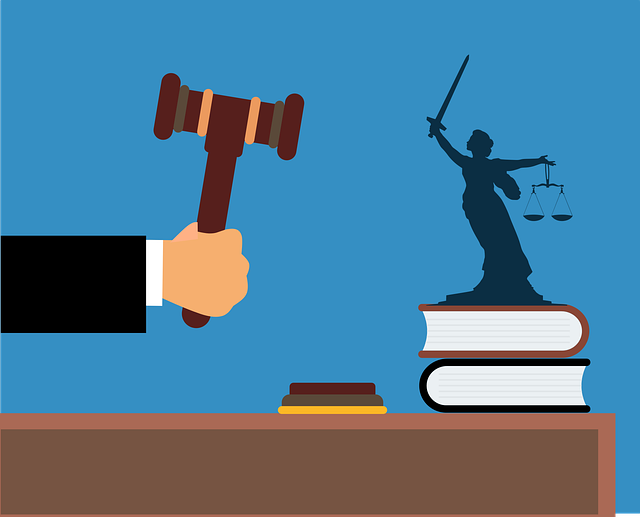Category: misdiagnosis lawyer
Misdiagnosis Lawyer: Navigating Medical Errors and Their Legal Ramifications
Introduction
In the complex interplay between healthcare, law, and patient rights, the role of a misdiagnosis lawyer emerges as a critical pillar. This comprehensive guide aims to unravel the intricacies of misdiagnosis law, offering readers a profound understanding of this specialized legal field. We will explore its global impact, economic considerations, technological advancements, and the challenges it faces. Furthermore, through case studies, we will delve into real-world scenarios where misdiagnosis law has left an indelible mark. By the end of this article, readers will grasp why this topic is not merely academic but a vital aspect of ensuring justice in healthcare.
Understanding Misdiagnosis Lawyer: Unveiling the Core
Definition: A misdiagnosis lawyer is a legal professional specialized in handling cases where a medical professional fails to accurately diagnose a patient’s condition, resulting in harm or adverse outcomes. This area of law focuses on advocating for patients who have suffered due to misdiagnosis, seeking justice and compensation for the resulting injuries.
Key Components:
- Medical Negligence: At its core, misdiagnosis law is rooted in medical negligence litigation. It involves proving that a healthcare provider deviated from the acceptable standard of care and this deviation directly caused harm to the patient.
- Accurate Diagnosis: The primary goal is to demonstrate that an alternative, correct diagnosis was possible and would have led to different treatment outcomes, potentially preventing harm.
- Patient Advocacy: Misdiagnosis lawyers act as champions for patients’ rights, ensuring they receive appropriate medical care and compensation for any losses incurred due to a misdiagnosis.
Historical Context: The concept of legal responsibility for medical errors has evolved over centuries. In ancient times, healing arts were often shrouded in secrecy, with little accountability for practitioners. However, as medicine progressed, so did the need for regulations and legal frameworks to address medical negligence. Modern misdiagnosis law gained significant traction in the 20th century, particularly in response to increasing patient awareness and a growing body of medical literature documenting diagnostic errors.
Significance: Misdiagnosis lawyer plays a pivotal role in several ways:
- Patient Safety: By holding healthcare providers accountable for their actions, it encourages better practices and promotes patient safety.
- Advocacy: It empowers patients to seek justice and compensation for suffering caused by medical mistakes.
- Accountability: This field ensures that medical professionals maintain high standards of care, minimizing the likelihood of diagnostic errors.
- Education: Successful cases often lead to improved training and education, enhancing diagnostic skills across the healthcare spectrum.
Global Impact and Trends
The impact of misdiagnosis lawyer is not confined to a single region but spans globally, reflecting the universal need for patient safety and justice.
International Influence:
- In developed countries like the United States, Canada, and most European nations, misdiagnosis law has established robust frameworks, ensuring patients have legal recourse for medical errors.
- Emerging economies are also witnessing the growth of this field as healthcare systems evolve and patient awareness increases. For instance, India’s legal system has seen a surge in misdiagnosis cases, with courts recognizing the need for accountability in healthcare.
- International organizations like the World Health Organization (WHO) have initiated discussions on global standards for medical negligence, which could shape future legal landscapes.
Trends Shaping the Trajectory:
- Patient Empowerment: A growing trend towards patient-centered care has empowered individuals to ask questions and demand better diagnostics, subsequently increasing the number of misdiagnosis cases.
- Medical Technology Advancements: While technology improves diagnosis, it also introduces new complexities, leading to a rise in diagnostic errors related to advanced procedures.
- Specialization: As healthcare becomes more specialized, so does the legal field, with sub-specialties focusing on specific areas of misdiagnosis, ensuring more nuanced representations.
- Alternative Dispute Resolution: Some jurisdictions are exploring alternative methods like mediation and arbitration for resolving misdiagnosis disputes, offering faster and potentially less adversarial resolutions.
Economic Considerations
The economic aspects of misdiagnosis lawyer are multifaceted, impacting both the legal profession and healthcare systems.
Market Dynamics:
- The demand for misdiagnosis legal services varies across regions, influenced by factors such as healthcare infrastructure, patient awareness, and legal frameworks.
- Larger, more developed markets typically experience higher demand due to larger populations and more complex healthcare systems.
- Specialized misdiagnosis law firms have emerged, catering to this niche, with some becoming industry leaders in medical negligence cases.
Investment Patterns:
- Legal firms invest significantly in research, expert witnesses, and medical professionals to enhance their capabilities in handling misdiagnosis cases.
- Some law firms have established partnerships with healthcare providers to improve diagnostic processes and reduce errors, thereby minimizing future legal liabilities.
- Venture capital firms are also showing interest in technology solutions aimed at enhancing diagnostic accuracy, potentially revolutionizing the medical field and reducing misdiagnosis rates.
Economic Impact on Healthcare Systems:
- Misdiagnosis lawsuits can result in substantial financial burdens for healthcare providers, leading to increased insurance premiums and potential changes in risk management strategies.
- To mitigate these risks, some healthcare institutions are adopting proactive measures, such as implementing quality assurance programs and utilizing technology for improved diagnostics.
- The economic impact of misdiagnosis extends beyond legal costs, including direct medical expenses, loss of productivity, and long-term care needs for patients harmed by diagnostic errors.
Technological Advancements
Technology plays a dual role in the context of misdiagnosis lawyer—both as a catalyst for errors and as a potential solution to enhance patient safety.
Technological Impacts:
- Image Diagnostics: Advanced imaging technologies like MRI and CT scans have improved diagnostic accuracy, but complex cases may still be challenging, leading to potential misdiagnoses.
- Electronic Health Records (EHR): EHR systems offer vast amounts of patient data, aiding diagnostics. However, errors in record-keeping or data interpretation can contribute to misdiagnosis.
- Telemedicine: The rise of telemedicine has expanded access to healthcare, but remote consultations may increase the likelihood of misdiagnosis due to limited physical examinations.
- Artificial Intelligence (AI): AI algorithms show promise in assisting diagnostics, but their reliance on training data and potential biases raises concerns about accuracy and accountability.
Potential Solutions:
- Medical Data Analytics: Advanced analytics can identify patterns and trends, improving diagnostic accuracy and enabling early intervention.
- Expert Systems: AI-driven expert systems can assist healthcare professionals in making more informed decisions, reducing the risk of misdiagnosis.
- Robotic Surgery: While not directly related to diagnostics, robotic surgery can minimize human errors during complex procedures, leading to better patient outcomes.
- Blockchain for Medical Records: Secure and transparent record-keeping through blockchain technology ensures data integrity, enhancing diagnostic reliability.
Policy and Regulation
The legal framework surrounding misdiagnosis lawyer varies globally, reflecting diverse cultural and legal traditions. However, several key policies and regulations have shaped this field.
Global Policies:
- Malpractice Laws: In many common law countries, malpractice laws form the backbone of misdiagnosis litigation, holding healthcare providers liable for negligence.
- Patient Rights Charters: Several nations have enacted charters or declarations outlining patient rights, including the right to accurate diagnosis and informed consent.
- Health Safety Organizations: International bodies like WHO provide guidelines and recommendations on medical negligence, influencing national policies.
Regional Variations:
- United States: The U.S. follows a strict tort law system, with each state having its own rules regarding medical malpractice claims, including statutes of limitations and cap limits on damages.
- European Union: EU member states have harmonized healthcare regulations, but misdiagnosis litigation varies across countries due to differing legal traditions.
- Canada: Canada’s common law system mirrors that of the U.S., with provinces having their own medical malpractice acts and procedures.
Influencing Factors:
- Legal Tradition: Common law systems tend to favor plaintiff-centric cases, while civil law jurisdictions may have more stringent requirements for proving liability.
- Healthcare System Structure: The type of healthcare system (public, private, or mixed) can impact the complexity and accessibility of misdiagnosis legal processes.
- Public Perception: Public trust in healthcare providers influences patient willingness to pursue legal action, as well as the perception of accountability within the medical community.
Challenges and Criticisms
Despite its vital role, misdiagnosis lawyer faces several challenges and criticisms that warrant careful consideration.
Main Challenges:
- Complex Proofs: Establishing medical negligence often requires intricate expert testimony and a deep understanding of both medicine and law, making cases demanding and expensive.
- Statutes of Limitations: Strict time limits for filing lawsuits can be challenging, especially in complex cases where the harm may not be immediately apparent.
- Lack of Standardized Protocols: Diagnostic guidelines vary across regions and healthcare institutions, making it difficult to establish a uniform standard of care for legal purposes.
- Underreporting: Many diagnostic errors go unreported, underestimating the true prevalence of misdiagnosis and hindering efforts to improve patient safety.
Criticisms and Proposed Solutions:
- Cost and Accessibility: High legal costs can deter patients from seeking justice, leading to a disparities in access to legal representation. Offering legal aid or alternative fee structures could address this issue.
- Expert Witness Bias: Critics argue that expert witnesses may have biases or financial interests affecting their testimony. Implementing rigorous qualifications and transparency measures for experts can mitigate these concerns.
- Medical-Legal Gap: Effective communication between healthcare professionals and lawyers is crucial but often challenging. Collaborative training programs could improve understanding and cooperation between these fields.
- Data Undercollection: To address underreporting, mandatory reporting systems and incentives for healthcare providers to disclose diagnostic errors can encourage transparency and continuous improvement.
Case Studies: Real-World Applications of Misdiagnosis Lawyer
Case 1: The Malignant Tumor Misdiagnosis
In a U.S. court case, a patient presented with symptoms that led her primary care physician to suspect a benign tumor. Despite repeated assurances, the tumor was malignant and had progressed significantly by the time an oncologist made the correct diagnosis. The patient filed a lawsuit, arguing that the delay in proper treatment resulted in advanced-stage cancer. The case settled out of court for an undisclosed amount, highlighting the potential long-term consequences of misdiagnosis.
Lessons Learned:
- Prompt diagnosis and treatment are crucial in managing many medical conditions.
- Patients have a right to seek second opinions and should not hesitate to question initial diagnoses.
- Healthcare providers must maintain thorough documentation to support their decisions, ensuring transparency for legal purposes.
Case 2: Neonatal Misdiagnosis and Long-Term Effects
A mother in the UK sued her healthcare providers after her newborn was misdiagnosed as having a rare genetic disorder. The mistake led to unnecessary and invasive treatments, causing significant long-term physical and developmental issues for the child. The case resulted in a substantial settlement, bringing attention to the impact of diagnostic errors on children’s lives and their families.
Key Takeaways:
- Misdiagnosis can have profound, lasting effects on patients’ lives, especially in pediatric cases where early interventions are critical.
- Healthcare providers must consider the broader implications of their actions, not just for individual patients but also for families and society at large.
- Transparent communication between healthcare professionals and parents is essential during critical decision-making periods.
Case 3: Telemedicine and Diagnostic Liability
With the rise of telemedicine, a patient in a rural area consulted an online doctor for persistent chest pain. The doctor requested further tests but failed to follow up on the results, leading to a misdiagnosis of heartburn when the patient actually had a serious cardiac condition. This case raised questions about liability in telemedicine practices, with experts arguing for clearer guidelines and legal frameworks to address such issues.
Insights:
- Telemedicine offers significant benefits but introduces new challenges regarding diagnostic accuracy and accountability.
- As telemedicine becomes more prevalent, regulatory bodies must adapt laws and guidelines to ensure patient safety while embracing this innovative healthcare delivery model.
- Patients using telemedicine services should be well-informed about potential limitations and encouraged to seek additional confirmatory tests when necessary.
Future Prospects: Navigating Emerging Trends
The field of misdiagnosis lawyer is poised for growth and evolution, shaped by technological advancements, shifting legal landscapes, and changing patient expectations.
Potential Growth Areas:
- AI-Assisted Diagnostics: As AI technology matures, its role in assisting with diagnostics will likely increase, potentially reducing misdiagnosis rates. However, legal frameworks must adapt to address liability for AI-generated errors.
- Genomics and Personalized Medicine: Advances in genomics are paving the way for personalized treatment plans. Misdiagnosis law may need to consider the unique challenges posed by interpreting genomic data accurately.
- Remote Healthcare Monitoring: The rise of remote monitoring devices could lead to earlier detection of health issues, but legal questions regarding patient privacy and consent will become more complex.
Emerging Trends to Watch:
- Pre-訴訟 Risk Management: Healthcare providers may increasingly adopt proactive risk management strategies, including advanced data analytics for predictive diagnostics, to minimize potential misdiagnosis liabilities.
- Alternative Dispute Resolution (ADR) in Misdiagnosis: The use of mediation and arbitration could gain traction as a faster and less adversarial way to resolve misdiagnosis disputes, potentially reducing legal costs for all parties.
- International Misdiagnosis Law Collaboration: With globalized healthcare and travel, there may be increased collaboration between jurisdictions to establish consistent standards and facilitate cross-border legal processes.
Conclusion: Navigating the Complexities of Patient Safety
In conclusion, misdiagnosis lawyer is a complex and multifaceted field that plays a critical role in ensuring patient safety, advocating for justice, and promoting accountability in healthcare. From historical roots to global trends, this area of law has evolved to address the challenges posed by an increasingly sophisticated medical landscape.
As technology advances, legal frameworks must adapt to new diagnostic tools and methods while also addressing emerging ethical considerations. The cases studied highlight the far-reaching consequences of misdiagnosis, emphasizing the need for continuous improvement in healthcare practices and legal protections.
The future of misdiagnosis lawyer looks bright, with opportunities for growth and innovation, but it also demands careful navigation through complex challenges. By embracing technological advancements while maintaining a strong focus on patient rights, this field can continue to contribute significantly to global healthcare justice.
FAQ Section: Addressing Common Concerns
Q: How do I know if I have a valid misdiagnosis case?
A: A valid case typically involves a healthcare provider’s failure to diagnose a condition accurately, leading to delayed or inappropriate treatment. This can result in harm or exacerbation of the patient’s condition. Key elements include establishing negligence, causation, and damages.
Q: What are the time limits for filing a misdiagnosis lawsuit?
A: Time limits vary by jurisdiction. In many places, you have one to two years from the date of the alleged misconduct or when the injury was discovered. Strict adherence to these deadlines is crucial, as missing them can bar your claim.
Q: Can I afford legal representation for a misdiagnosis case?
A: Legal costs can be a concern, but many law firms offer contingency fees, meaning they only charge if they win your case. Legal aid organizations may also provide assistance for those with limited financial resources.
Q: How important is expert testimony in misdiagnosis cases?
A: Expert testimony is often crucial to establishing medical negligence. Medical experts can help explain complex diagnostic procedures and standards of care, providing a clear understanding of what constitutes proper practice.
Q: What are the potential outcomes of a successful misdiagnosis lawsuit?
A: Outcomes vary based on jurisdiction and case specifics. Damages may include medical expenses, lost wages, pain and suffering, and in some cases, punitive damages to deter negligent behavior. The primary goal is to secure compensation for harm caused by the misdiagnosis.
Misdiagnosis Lawsuits: When a Lawyer is Your Best Defense

Misdiagnosis, due to inadequate training or missing symptoms, can lead to severe patient outcomes in…….
Misdiagnosis Lawyers: Safeguarding Patients, Ensuring Healthcare Justice

Misdiagnosis can lead to severe health, emotional, and financial consequences for patients. Misdiagn…….
Leveraging Legal Complaints: Strategies for Misdiagnosis Lawyer Pressure

Legal complaints are powerful tools for seeking justice, with misdiagnosis lawyers specializing in a…….
Misdiagnosis Lawyer: Protecting Patients’ Rights After Medical Errors

Misdiagnosis, a critical medical error with severe consequences, necessitates the expertise of a qua…….
Misdiagnosis Lawyer: Unlocking Healthcare Law’s Challenges & Solutions
Misdiagnosis Lawyer: Unlocking Case Success Through Expert Testimony

Misdiagnosis lawyers rely on expert testimony as a powerful tool to seek justice in medical negligen…….
Misdiagnosis Lawyer: Unraveling 2025 Healthcare Law’s Challenges

Despite advancements, misdiagnosis remains a critical issue in healthcare, leading to delayed or ina…….
Misdiagnosis vs. Delayed Diagnosis: Legal Implications for Patients & Lawyers

Misdiagnoses, often life-altering, prompt patients to seek legal recourse with a misdiagnosis lawyer…….
Navigating Misdiagnosis Lawyer Claims: Strategies for Pressure and Justice

A legal complaint, driven by a misdiagnosis lawyer, seeks justice for medical negligence, holding pr…….

